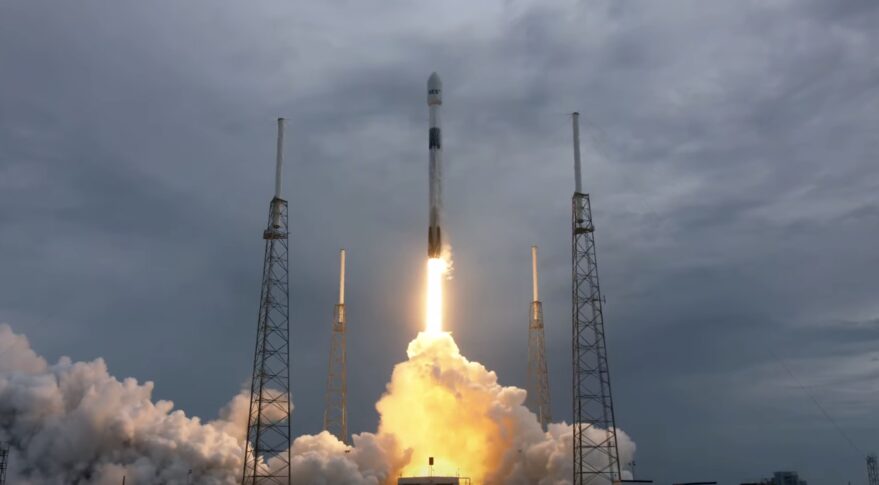
SpaceX launches SES-22 C-band replacement satellite (Image Credit: Space News)
TAMPA, Fla. — SpaceX launched the first television broadcast satellite under SES’s C-band clearing plan June 29 from Cape Canaveral in Florida.
A Falcon 9 rocket lifted off at 5:04 p.m. Eastern carrying the SES-22 satellite, which will help SES reap billions of dollars from vacating C-band frequencies for U.S. 5G networks.
SES-22 separated from the rocket in geostationary transfer orbit about 33 minutes later.
The Falcon 9’s reusable first stage successfully landed on a SpaceX drone ship in the Atlantic Ocean following the launch.
The booster previously supported a mission in May for Starlink, SpaceX’s broadband megaconstellation.
SES-22 is the first to launch of six geostationary satellites that SES ordered to migrate broadcast customers into a narrower swath of C-band.
SES and other C-band holders are in line for $9.7 billion in total from the Federal Communications Commission (FCC) if they meet its deadlines for clearing 300 MHz of the spectrum.
The 3,500 kilogram SES-22 satellite was built by Thales Alenia Space, which is also constructing the company’s SES-23 C-band replacement satellite.
Northrop Grumman and Boeing are also building two C-band satellites apiece for SES.
United Launch Alliance is slated to launch two SES C-band replacement satellites in the third quarter of 2022, and SpaceX is due to deploy another two later in the year.
The sixth satellite is being used as a ground spare.
SES said June. 24 it remains on track to meet the FCC’s December 2023 spectrum clearing deadline.
SES and Intelsat, which together hold the largest share of C-band in the United States, successfully unlocked more than $2 billion in combined proceeds from meeting an initial FCC milestone last year.
Intelsat and SES will get a total $4.9 billion and $3.97 billion, respectively, under the FCC’s plan.
However, the satellite operators remain locked in a long-running legal dispute over their share of the proceeds.
The dispute stems from Intelsat’s withdrawal from their C-Band Alliance, where SES says the competitors agreed to split proceeds from clearing the spectrum evenly.
Intelsat argues their agreement was no longer applicable when the FCC decided to hold a public auction of C-band spectrum, rather than a private process run by the C-Band Alliance.
Intelsat ordered seven satellites for its C-band clearing plan and has lined up Arianespace and SpaceX for launches starting in 2022.
Maxar Technologies is building four C-band replacement satellites for Intelsat and Northrop Grumman is constructing the other two. None of the seven are intended to be ground spares.
Galaxy 33 and Galaxy 34, Intelsat’s first two C-band replacement satellites, are due to launch on a Falcon 9 from Cape Canaveral in October.








